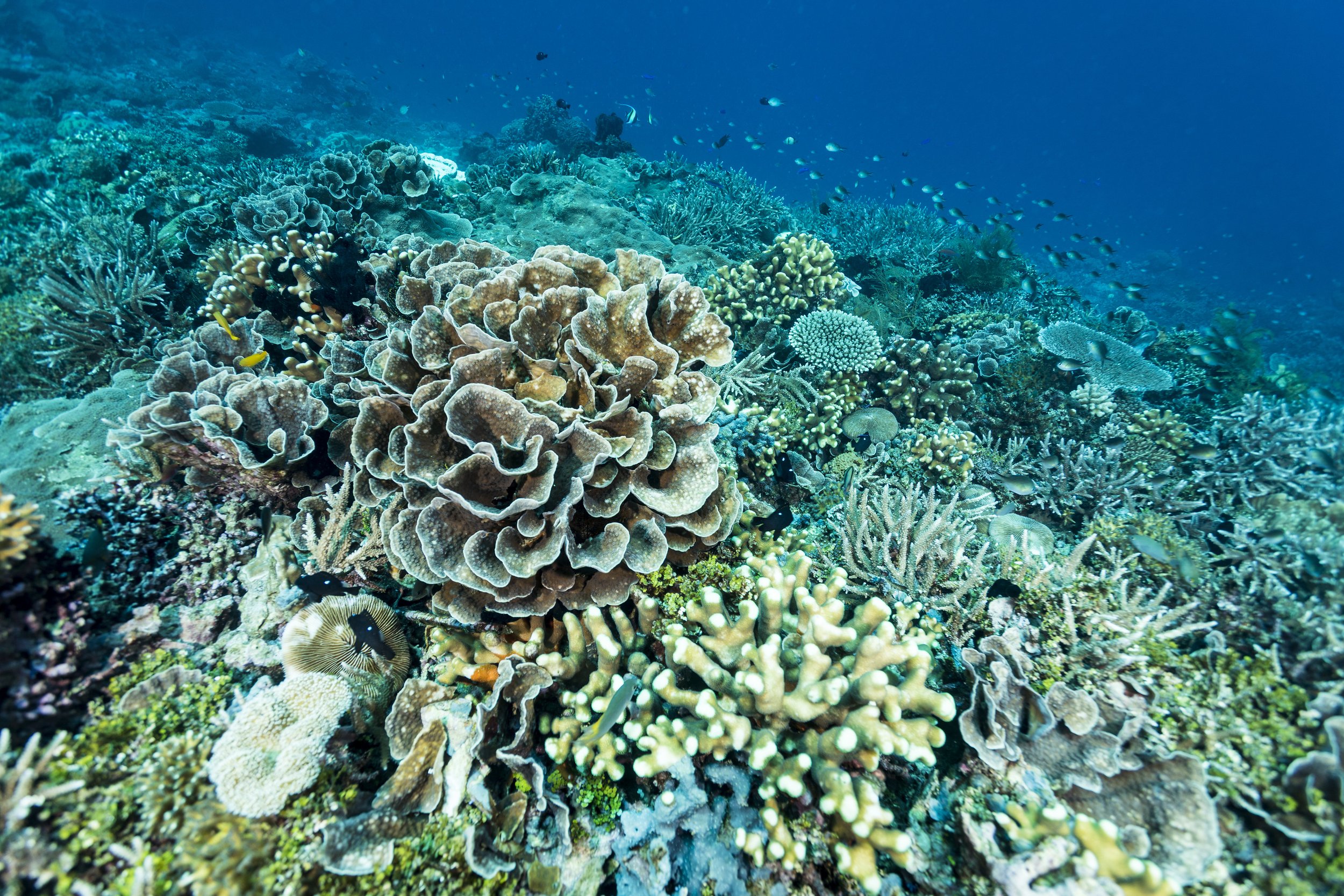
Planet Rock
Diver Level: Great for Intermediate - Medium current
Three kilometres offshore from Madang is the volcanic seamount known as Planet Rock. The seas around the mount plummet to a depth of over 600m however, the strong ocean currents that surge through Astrolabe Bay sweep around and across the apex of the mount at only 4m - bringing with them large schools of predatory, pelagic fish.
"When I dived on Planet, I really felt like I was entering a food chain!"
This quote from a past visitor is no exaggeration - as soon as you hit the water on Planet Rock you become aware of an agitation and excitement amongst the smaller schooling fish which inhabit the surface of the mount. Premier amongst these is the magnificent Balistoides Consicillus (Clown Triggerfish) which is often caught in ambient light conditions by lucky photographers. Care needs to be taken however, as the many species of Triggerfish that make their homes on the mount are aggressive and territorial.
Another popular inhabitant of Planet Rock is the Gymmothoraz Flavomarginatus (agate eyed moray eel) which, although a nocturnal hunter, can often be seen peering out of the rocky crags as the spritely little Labroides Dimidiatus (bluestreak cleaner wrasse) dart in and out of their fearsome jaws - going about their cleaning duties. These eels can also be found in large numbers along the Barrier Reef - offering a more accessible photo opportunity as part of a night dive.
Schools of blue fin trevally and jacks glide through the currents around the edge of the mount and their occasional darting scatters are inevitable signs that some large predator is approaching.
Virtually all of the larger sharks that inhabit the waters of Papua New Guinea have been seen and photographed in the currents around Planet Rock. The white tipped reef sharks from the reefs closer to shore are less obvious here – making way for the larger silver tips and whalers. Fortunate divers also have encounters with hammerheads, which have been known to school here together with the awesome Galeocerda Cuvieri (tiger shark).
Due to the strong currents and its offshore location, Planet Rock is not always accessible; but when it is, you will not find a better spot to get your adrenaline pumping.







